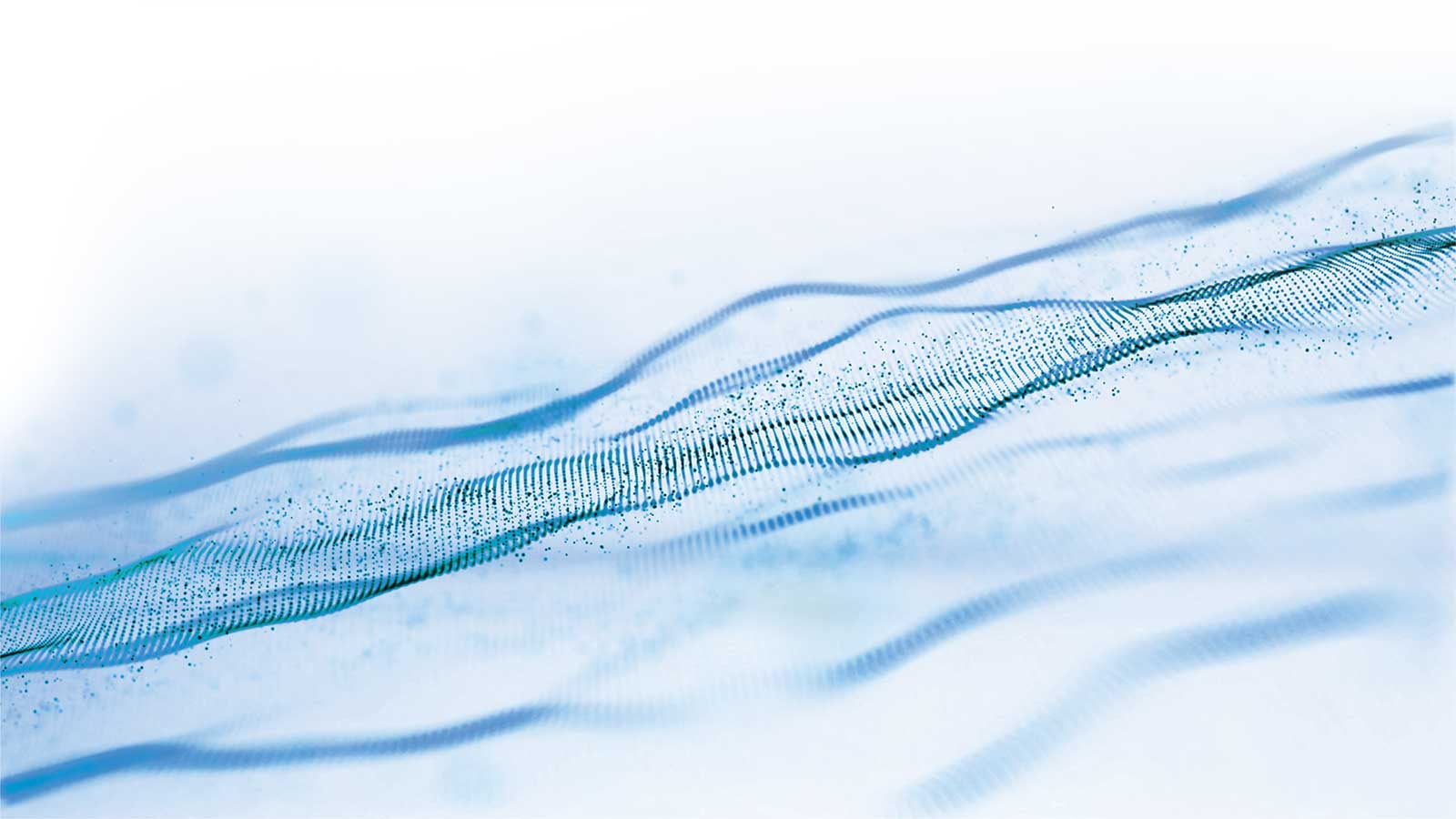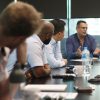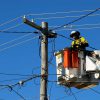A small digital device attached to tens of thousands of water meters across North-Central Victoria is making a difference to the way that a regional water authority and its customers manage water efficiently.
 Ventia is installing the innovative devices on existing customer meters at more than 80,000 residential properties across Coliban Water’s regional urban network. Over a fouryear period, the devices will be rolled out to residential properties in 49 towns, including Bendigo and Echuca.
Ventia is installing the innovative devices on existing customer meters at more than 80,000 residential properties across Coliban Water’s regional urban network. Over a fouryear period, the devices will be rolled out to residential properties in 49 towns, including Bendigo and Echuca.
The device, developed by our Internet of Things (IoT) business Vianet, uses low power, wide area network technology (LPWAN) to record the volume of water consumption on an hourly basis. The data is encrypted and transmitted securely to a central database, providing quality information for billing and network analysis.
According to Corey Bourne, Manager Infrastructure at Coliban Water, digital monitoring is “an innovative way for Coliban to identify cost savings and network efficiencies for its customers through the timely identification of leaks”.
“We will primarily use the data loggers for customer billing. They can also provide us with a better understanding of customers’ water usage and play a role in reducing water wastage,” he says.
For customers, digital metering puts an end to estimated bills and the need for Coliban’s meter reading staff to enter their properties every quarter. Because meter data is collected hourly and not quarterly, leaks can more easily be detected, saving water and consumption charges.
Digital metering also helps to find water losses arising from network leakages and water theft. This allows for earlier rectification and reduces the cost of wasted water.
With Vianet’s LoRaWAN network canopy extending across Coliban’s entire water district, there is an opportunity to deploy a wide variety of data collecting sensors to inform and provide insights on many aspects of the business.
IoT is at the heart of utilities’ digital transformation and we are excited that Vianet applications have enormous potential to be applied for Ventia clients across a range of industries.
 “Knowledge is power, and data gives us knowledge” says Matthew Henderson, Product Development Manager Vianet.
“Knowledge is power, and data gives us knowledge” says Matthew Henderson, Product Development Manager Vianet.
“Vianet’s devices gather raw data that is extracted and categorised to identify and analyse behavioral data, trends and patterns.
“The data tells a story about every aspect of a utilities’ operations and it’s these insights that have the potential to transform how utilities think about their business.”
As an example, water utilities can have real-time visibility of their most valuable asset – the pipe network. Informed decisions can be made on maintenance and capital works programs and, in some cases, capital works can be deferred.
Vianet can help clients leverage low power, wide area network technologies to solve a broad range of business problems, from providing more responsive customer service, to minimising carbon footprints and reducing customer rebates.
Another example of how Vianet is using IoT technology to help water customers is our range of sewer network monitoring solutions.
For Christchurch City Council, we designed a customised low-cost device which is being installed on three vacuum sewer systems to provide real-time monitoring across 1,483 chambers.
The battery-powered devices communicate data on the performance of vacuum sewer valves and send an alarm on detection of anomalies in the network, such as a valve remaining open for too long or not opening at all.
As part of our end-to-end solution, data analysis is available to the client via an online management dashboard. This includes a geographic map of the network, pinpointing the precise locations where issues have been detected.
Previously, the client would often not be aware of a problem until it received complaints from customers. Even then, it would be a matter of trial and error for repair crews to identify the exact location of the fault. Now, the Vianet data allows the client to find issues before customers do, pinpointing precisely the sewer pit where the issue resides.
“We have proven the value of IoT solutions to the water industry,” says Matthew Henderson. “IoT is at the heart of utilities digital transformation and we are excited that Vianet applications have enormous potential to be applied to Ventia clients across a range of industries.”
MEET NATALIA SAVINOVA
 Working as a Data Engineer in Ventia’s Internet of Things (IoT) business, Vianet, Natalia lives and breathes in a world of data science.
Working as a Data Engineer in Ventia’s Internet of Things (IoT) business, Vianet, Natalia lives and breathes in a world of data science.
In her role, Natalia examines big data received via sensors designed and developed by the Vianet team. Working across a multitude of fields, including telecommunications and water utilities, Natalia says she loves what she does. “I thrive on looking for patterns in data to try and uncover and resolve issues.”
Reflecting on the future, Natalia says, “I would like to see projects where we examine electricity consumption as the Vianet team could help to ensure consumption is more efficient and sustainable.”








